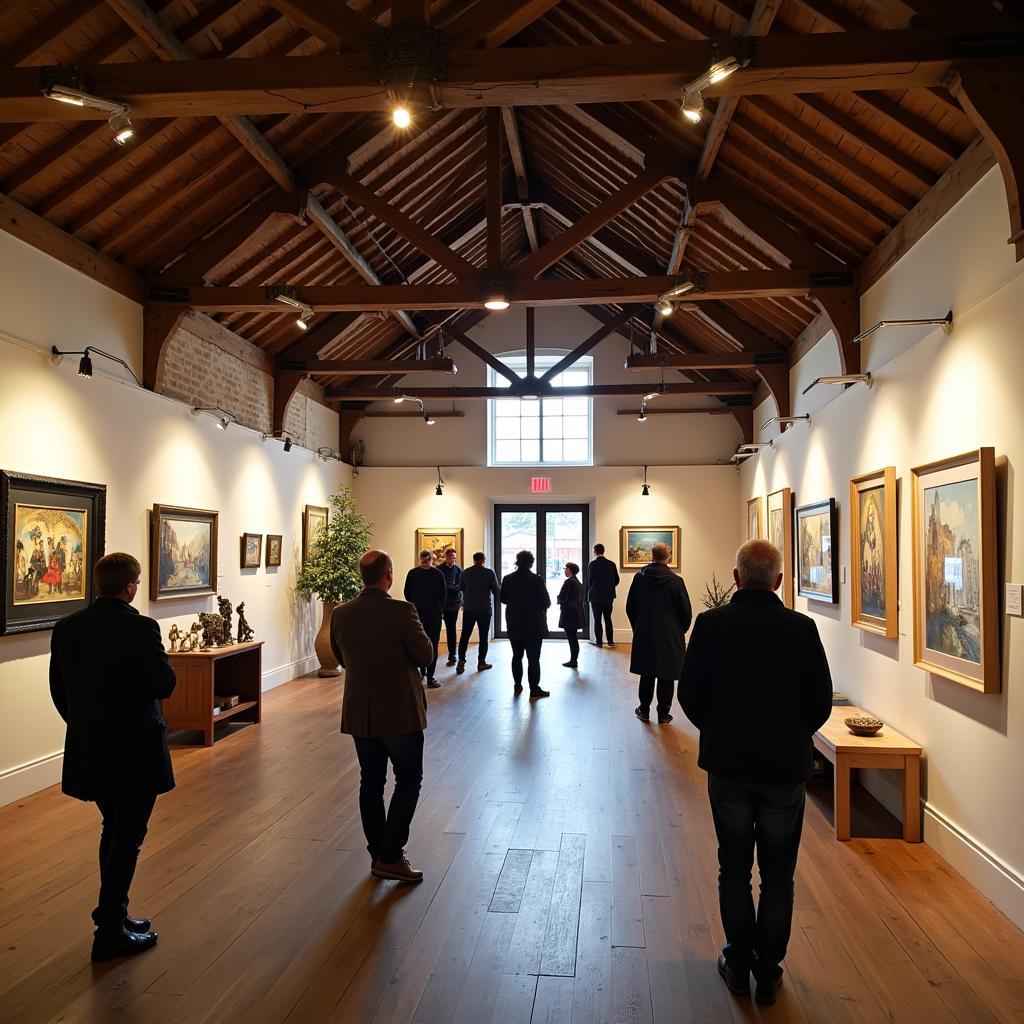Exploring the 6 Functions of Art: A Digital Artist’s Perspective
Art, in its myriad forms, serves a multitude of purposes. Understanding the 6 Functions Of Art allows us to appreciate its impact on individuals and society, traversing far beyond mere aesthetics. From ancient cave paintings to modern digital installations, art communicates, challenges, and connects us in profound ways. Let’s delve into these crucial functions and discover the power art holds. Soon after the earliest forms of liturgical art, we see a shift towards art for different purposes.
How Does Art Function in Society?
Art plays a vital role in shaping and reflecting society. It acts as a mirror to our collective consciousness, capturing the zeitgeist and preserving cultural heritage for future generations. But it also acts as a catalyst for change, challenging norms and inspiring new perspectives. These diverse roles are categorized into six key functions.
The 6 Functions of Art: A Deep Dive
- Ritualistic/Spiritual: Art often serves a spiritual or ritualistic purpose, connecting individuals to something greater than themselves. Think of the intricate stained glass windows of cathedrals or the symbolic masks used in traditional ceremonies. These artistic expressions transcend the mundane and offer pathways to the divine.
- Utilitarian: Art can be functional as well as beautiful. Consider the elegant curves of a well-designed chair or the intricate patterns woven into a tapestry. These objects combine aesthetic appeal with practical use, enriching our daily lives.
- Narrative: Art tells stories, whether through the epic sweep of a historical painting or the intimate details of a portrait. It preserves memories, documents events, and transmits cultural narratives across generations.
- Aesthetic: This function focuses on the beauty and pleasure derived from art. It is the appreciation of form, color, composition, and the sensory experience it evokes. Sometimes, art without meaning is just aesthcis, and that’s ok too.
- Expressive: Art provides an outlet for emotions, thoughts, and experiences. Artists use their chosen medium to communicate their inner world, offering insights into the human condition and fostering empathy and understanding.
- Social/Political: Art can be a powerful tool for social commentary and political activism. It challenges the status quo, raises awareness of social injustices, and inspires action towards a more equitable world.
What are the main functions of art? The main functions are often considered to be aesthetic, expressive, and social/political, but this can vary depending on the cultural context.
Why are the functions of art important? Understanding these functions allows us to fully appreciate the depth and complexity of artistic expression.
How can art be both utilitarian and aesthetic? Consider an art mat, which is both beautiful and protects surfaces. Many objects seamlessly blend functionality with artistic design.
Applying the 6 Functions in Digital Art
As a digital artist, I find these functions continually inspiring my creative process. The digital realm offers endless possibilities for exploring these concepts in innovative ways. From interactive installations that blur the lines between art and technology to virtual reality experiences that transport viewers to other worlds, digital art pushes the boundaries of artistic expression.
Exploring Meaning and Purpose in Digital Creations
Digital art provides unique opportunities for artists to engage with the 6 functions of art. Interactive narratives, immersive environments, and data-driven visualizations allow for a level of engagement and exploration not possible with traditional media. Artists can craft experiences that are both aesthetically captivating and deeply meaningful.
What tools do digital artists use to achieve these functions? Digital artists utilize software like Photoshop, Illustrator, Blender, and various coding languages to create their work.
How does digital art differ from traditional art in its function? While the core functions remain similar, digital art allows for greater interactivity, accessibility, and manipulation of the medium.
What is the future of art and its functions in the digital age? The future likely holds even more immersive and personalized art experiences, further blurring the lines between the physical and digital worlds. Imagine virtual museums accessible to anyone, anywhere, allowing individuals to connect with art on a deeper level.
The Evolving Role of Art in the Digital Age
The advent of digital technology has revolutionized the art world, expanding its reach and democratizing access to creative tools. The 6 functions of art remain relevant, but their expression is evolving. The internet has become a powerful platform for artists to share their work, connect with audiences, and participate in global conversations.
Art as a Bridge Between Worlds
Art supplies for tattoo artist have also made a move to the digital realm. Art has the power to bridge cultures, challenge perceptions, and inspire positive change. By understanding its functions, we can unlock its full potential and harness its transformative power in the digital age. This requires us to embrace new technologies and explore innovative ways of creating and experiencing art.
Conclusion: Embracing the Power of Art’s Six Functions
The 6 functions of art offer a framework for understanding its impact on our lives and the world around us. From ritualistic expressions to social commentary, art shapes our understanding of ourselves and our place in the universe. By embracing these functions, we can appreciate the multifaceted nature of artistic expression and unlock its transformative power. Understanding these functions encourages us to engage with art on a deeper level and explore its potential to create meaningful experiences. Now it’s your turn to explore these functions in your own art! Let these functions guide your creative explorations and inspire you to create work that resonates with both yourself and the world.
FAQ
- What are the six primary functions of art? Art serves ritualistic, utilitarian, narrative, aesthetic, expressive, and social/political functions.
- How does understanding these functions enhance art appreciation? It allows for a more nuanced and comprehensive understanding of the artist’s intentions and the work’s impact.
- Can a single artwork fulfill multiple functions simultaneously? Yes, many artworks blend multiple functions seamlessly.
- How has technology impacted the functions of art? Technology has expanded the ways in which art can be created, experienced, and shared, leading to new forms of expression and interaction.
- How do I identify the functions of a specific artwork? Consider its purpose, context, and the artist’s intention.
- How can the 6 functions of art impact my own creative practice? Use them as starting points and inspirations, allowing you to explore your creative voice in meaningful ways.
- How can digital art specifically utilise the function of art to bridge cultures and communicate ideas in a globalized society? Digital art transcends geographic limitations, facilitating cultural exchange and global dialogues across diverse communities.
Need Help with Your Art Journey?
When you need support with your creative endeavors, please contact us:
Phone: 02462573573
Email: [email protected]
Address: Savico Megamall, 7-9 Đ. Nguyễn Văn Linh, Gia Thụy, Long Biên, Hà Nội 10000, Việt Nam.
We have a 24/7 customer support team ready to assist you. You can also find more information about art of clean.



